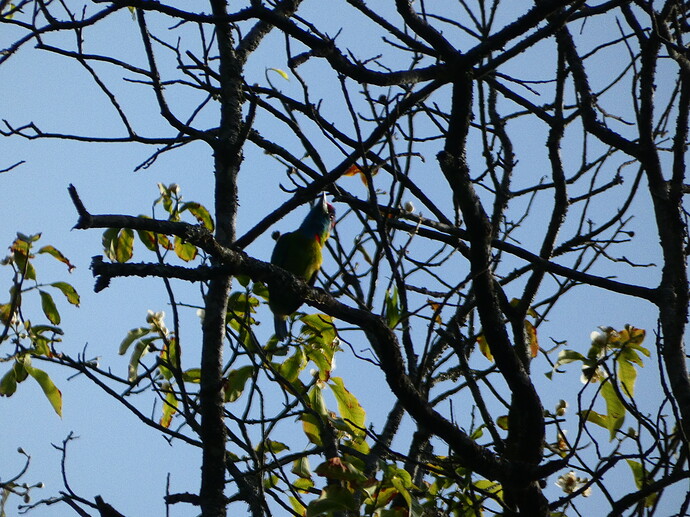First recommendation is to shoot raw - it gives you so much more latitude when trying to rescue tough bird photos.
As for workflow, lets say you have several shots of an as-yet unidentified bird (among several hundred photos that day)
Step 1 is to efficiently pick out the best photo to work on.
Step 2 I have a standard “style” that I will apply to all photos just to let me discard any hopeless shots (out of focus, obscured by leaves, twigs, motion blur etc) and see more easily which photo is best. The style does the following:
White Balance set to “Camera Reference”
Color Calibration set to “as shot in camera”
Crop to about 25% of the original. Normally the bird is dead centre in the photo, and that’s all you want to look at but beware, there may be other birds that you didnt notice at the time.
Lens correction (DT should pick up your camera and lens automatically)
Highlight reconstruction (default)
Exposure set to 1.5 - that works for me, for birds, as the bird is usually darker than the background
Diffuse or Sharpen set to demosaicing no AA filter - this gives a noticeable amount of free sharpening
color balance rgb set to Basic colorfulness: vibrant colors
filmic rgb
Note: I don’t use the modules sharpen or local contrast at this point, although they may be useful later
Step 3 adjust the exposure to get as much detail in view as possible, then go to filmic and use the dropper to auto adjust the white relative exposure. If the bird is really backlit then go to local contrast and use HDR local tone mapping - this often gives you a decent view of the bird
At this point you can decide whether the photo is worth working on. If you can identify the bird now, maybe you have other images later in the day that are better for detailed processing. It is often worth copying your current settings onto the other images just to see if they are any good.
Assuming you are working on your best shot:
Step 4 use diffuse or sharpen options. First draw a mask on the bird, and use feathering radius etc to correct the mask to just pick out the bird - even a tiny amount does the trick. I use lens deblur and local contrast - but these really need a good GPU or it takes forever. . .
Step 5 decide whether to go to town on the image. Recognise the problems you are trying to solve - these may well be different depending on your lighting conditions, distance to the bird, etc.
Then you can go on with color balance, tone equaliser denoise profiled and further masking (eg to pick out the bird’s eye more clearly)
Hope that is useful!





